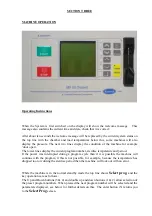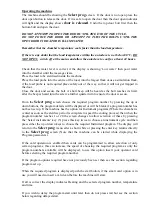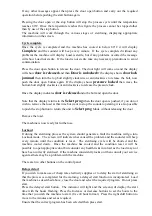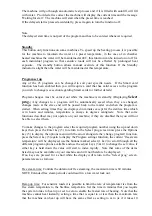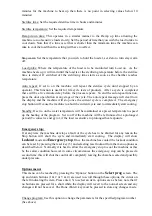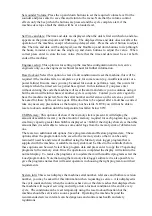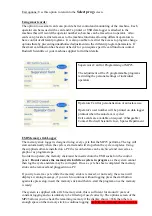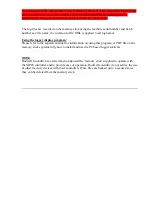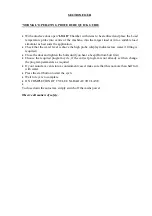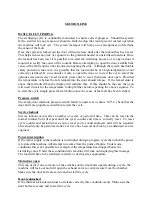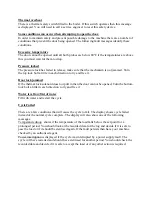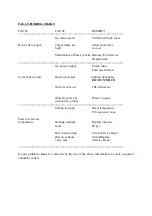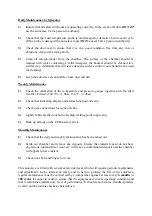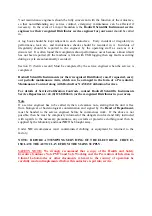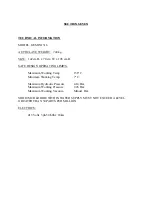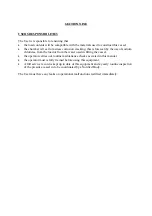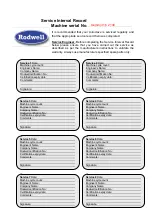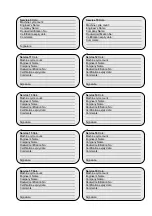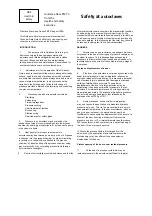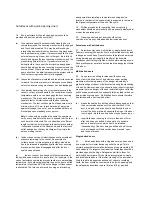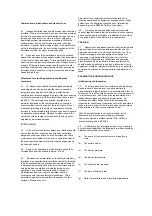
Daily Maintenance by Operator
1) E
nsure that all safety interlocks are operating correctly. In the event of failure
DO NOT
use the autoclave. Call a person in authority.
2)
Check that the Load temperature probe is not damaged or defective before each cycle.
(If the probe is damaged the autoclave must
NOT
be used, Call a person in authority).
3)
Check the door seal to ensure that it is in a good condition free from any cuts or
abrasions, clean with a damp cloth.
4)
Clean all foreign matter from the chamber. The surface of the chamber should be
washed with water containing a mild detergent; the baskets should be cleaned in a
similar way. (Materials that will leave deposits such as cotton wool should not be used
for cleaning)
5)
Keep the autoclave clean and free from dust and dirt.
Weekly Maintenance
1)
Check the calibration of the temperature and pressure gauges together with the chart
recorder if fitted. (120.5ºC = 1.0bar, 134 ºC = 2.0bar)
2)
Check that indicating display and alarms function correctly.
3)
Check pipe connections for signs of leaks.
4)
Lightly lubricate the door bolt with high melting point copper slip.
5)
Back up all logs on the USB memory stick
Monthly Maintenance
1)
Check that the daily and weekly maintenance has been carried out.
2)
Scrub out chamber and remove any deposits. Ensure that materials used do not have
any ferrous content (Steel wool etc. will leave a contaminated deposit and the chamber
will appear to have rusted).
3)
Check door bolt and hinges for wear.
This autoclave is fitted with several safety interlocks which will require periodic maintenance
and adjustment. In the interest of safety and to help to prolong the life of the autoclave,
regular maintenance must be carried out by a competent engineer at least every
6 months
or
300 cycles
if sooner in order to ensure that the equipment is in safe operating condition and
that it maintains a satisfactory level of performance. It should also become standard practice
to carry out the routine checks as listed above.

